#visit jakarta
Text
Ada jual burung hantu , monyet , beo dsb satwa eksotis @ pameran flora & fauna jakarta ❤️
https://youtu.be/lToRKJe_G20

#flona#flora#fauna#pameran flora fauna#lapangan banteng#youtube#youtuber#youtubeshorts#shorts#youtube shorts#wonderful indonesia#visit jakarta#wisata jakarta#jakarta
2 notes
·
View notes
Text
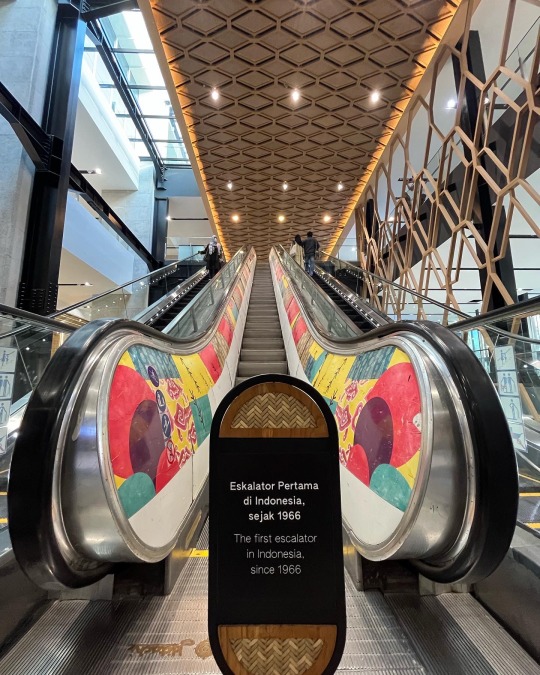
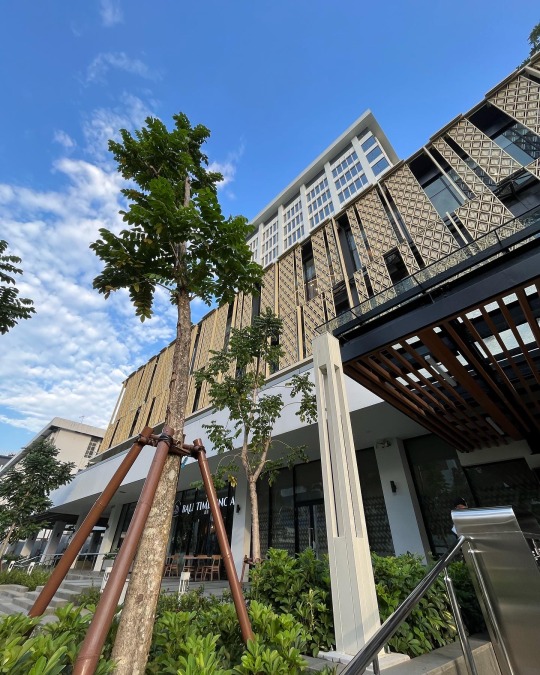


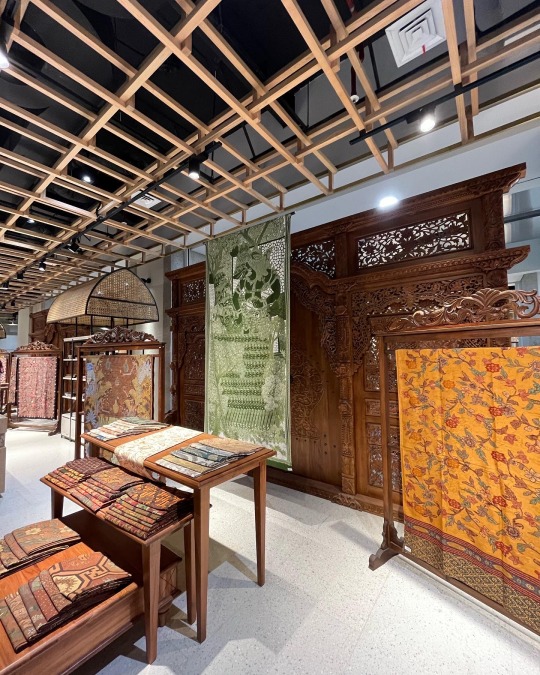
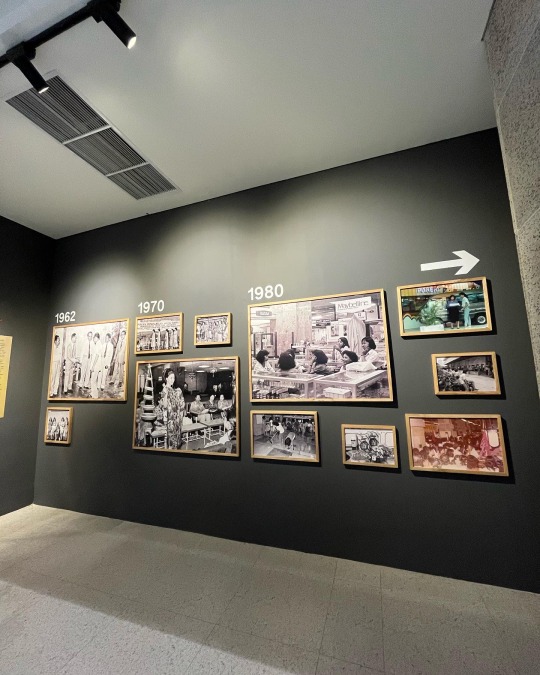

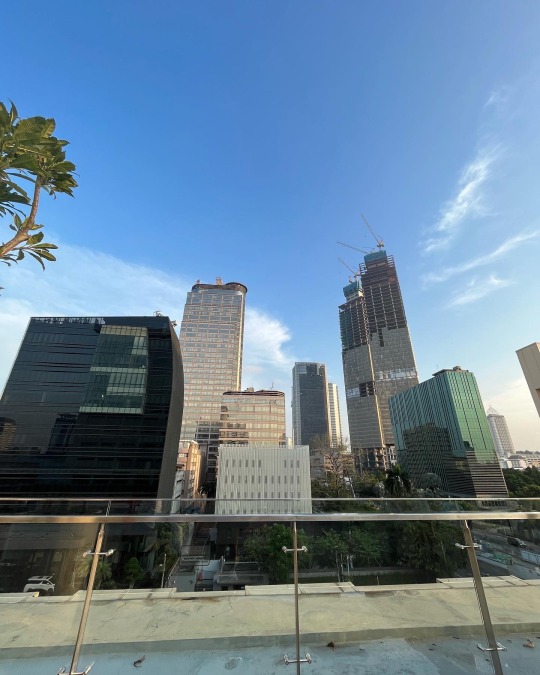
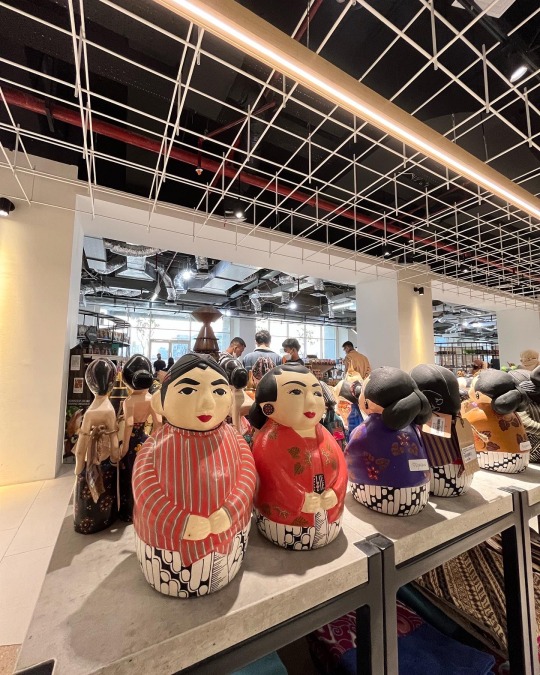

#first#escalator#sarinah#thamrin#jakarta#indonesia#central#store#department#historic#iconic#shops#built#new#face#renovated#renewed#open#president#visit#viewing#deck#point#spot#food#noodle#salad#vegetable#veg#vegetarian
562 notes
·
View notes
Text
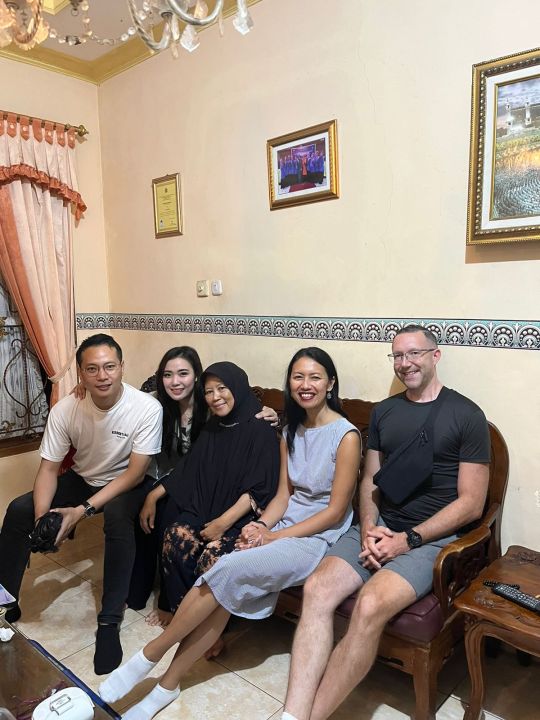
Endang's cousin's husband had recently passed away so we met up with Koko and his wife and paid her a visit (pictured center) to her house in Lubang Buaya, East Jakarta.
0 notes
Text
instagram
This is insane. If this is what might be happening behind the scenes with other artists proceeding them to cancel their Asian legs apart from one country lord save us.
#is this why louis kept only jakarta#and canceled asian tour shows#doesn't seem like him at all#he likes to be in trenches with the fans#and visit as many places as possible#and do as many shows#why did he cancel asian leg save for Jakarta i still dont understand#Indians joking with let the billionaire invite him for the wedding#what is going on#good for Singapore#worse for the asian fans#i saw multiple artists cancel their asian shows#we need answers#Instagram
0 notes
Text
"A 2019 sighting by five witnesses indicates that the long-extinct Javan tiger may still be alive, a new study suggests.
A single strand of hair recovered from that encounter is a close genetic match to hair from a Javan tiger pelt from 1930 kept at a museum, the study shows.
“Through this research, we have determined that the Javan tiger still exists in the wild,” says Wirdateti, a government researcher and lead author of the study.
The Javan tiger was believed to have gone extinct in the 1980s but only officially declared as such in 2008...
Ripi Yanuar Fajar and his four friends say they’ll never forget that evening after Indonesia’s Independence Day celebration in 2019 when they encountered a big cat roaming a community plantation in Sukabumi, West Java province.
Immediately after the brief encounter, Ripi, who happens to be a local conservationist, reached out to Kalih Raksasewu, a researcher at the country’s National Research and Innovation Agency (BRIN), saying he and his friends had seen either a Javan leopard (Panthera pardus melas), a critically endangered animal, or a Javan tiger (Panthera tigris sondaica), a subspecies believed to have gone extinct in the 1980s but only officially declared so in 2008.
About 10 days later, Kalih visited the site of the encounter with Ripi and his friends. There, Kalih found a strand of hair snagged on a plantation fence that the unknown creature was believed to have jumped over. She also recorded footprints and claw marks that she thought resembled those of a tiger.
Kalih then sent the hair sample and other records to the West Java provincial conservation agency, or BKSDA, for further investigation. She also sent a formal letter to the provincial government to follow up on the investigation request. The matter eventually landed at BRIN, where a team of researchers ran genetic analyses to compare the single strand of hair with known samples of other tiger subspecies, such as the Sumatran tiger (Panthera tigris sumatrae) and a nearly century-old Javan tiger pelt kept at a museum in the West Java city of Bogor.
“After going through various process of laboratory tests, the results showed that the hair sample had 97.8% similarities to the Javan tiger,” Wirdateti, a researcher with BRIN’s Biosystemic and Evolutionary Research Center, said at an online discussion hosted by Mongabay Indonesia on March 28.
The discussion centered on a study published March 21 in the journal Oryx in which Wirdateti and colleagues presented their findings that suggested that the long-extinct Javan tiger may somehow — miraculously — still be prowling parts of one of the most densely populated islands on Earth.
Their testing compared the Sukabumi hair sample with hair from the museum specimen collected in 1930, as well as with other tigers, Javan leopards and several sequences from GenBank, a publicly accessible database of genetic sequences overseen by the U.S. National Institutes of Health.
The study noted that the supposed tiger hair had a sequence similarity of 97.06% with Sumatran tigers and 96.87% with Bengal tigers. Wirdateti also conducted additional interviews with Ripi and his friends about the encounter they’d had.
“I wanted to emphasize that this wasn’t just about finding a strand of hair, but an encounter with the Javan tiger in which five people saw it,” Kalih said.
“There’s still a possibility that the Javan tiger is in the Sukabumi forest,” she added. “If it’s coming down to the village or community plantation, it could be because its habitat has been disturbed. In 2019, when the hair was found, the Sukabumi region had been affected by drought for almost a year.” ...
Didik Raharyono, a Javan tiger expert who wasn’t involved in the study but has conducted voluntary expeditions with local wildlife awareness groups since 1997, said the number of previous reported sightings coupled with the new scientific findings must be taken seriously. He called on the environment ministry to draft and issue a policy on measures to find and conserve the Javan tiger.
“What’s most important is the next steps that we take in the future,” Didik said."
-via Mongabay, April 4, 2024
#tigers#tiger#endangered species#extinction#conservation#environment#extinct animals#de extinction#indonesia#java#big cats#wild animals#good news#hope
636 notes
·
View notes
Text
369 HOTSPOTS:
Africa:
Asia:
— Saranrom Park, Bangkok (3PM—5PM)
— New Delhi, Lodhi Garden (1:30PM—3:30PM)
— Tennis Indoor Senayan, Jakarta (3PM—5PM)
— Bengkel SCBD, Jakarta (3PM—5PM)
— Cross Maidan Garden, Mumbai (1:30PM—3:30PM)
Europe:
— Wizink, Madrid
— La Riviera, Madrid
— Razzmatazz, Barcelona
— Palau, Barcelona
— Miribilla, Bilbao
— Scala, London
— Shepherds Bush Empire, London
— O2 Manchester Apollo, Manchester
— O2 Arena, London
—Atlas Arena, Łódź (12PM—2PM)
— The Dome, Doncaster
— Utilita Arena, Sheffield
— Tauron Arena, Kraków (12PM—2PM)
— Międzynarodowe Targi Poznańskie, Poznań (12PM—2PM)
— Meo Arena, Lisbon (3PM—5PM)
Latin America:
— Rioarena, Rio de Janeiro (12PM—2PM)
— Allianz Parque, São Paulo (12PM—2PM)
— Espaço Unimed, São Paulo (12PM—2PM)
— Liggo Arena, Curitiba (12PM—2PM)
— Movistar Arena, Santiago (12PM—2PM)
— Estadio Bicentenario, Santiago (12PM—2PM)
—Pepsi Center WTC, CDMX (2PM—4PM)
— Autódromo Hermanos Rodríguez, CDMX (2PM—4PM)
— Auditorio Josefa Ortiz de Domínguez, Queretaro (2PM—4PM)
— Auditorio Telmex, Gudalajara (2PM—4PM)
— Arena V.F.G., Guadalajara (2PM—4PM)
— Parque Fundidora, Monterrey (2PM—4PM)
— Auditorio Citibanamex, Monterrey (2PM—4PM)
— Parque Centenario, Guayaquil (2PM—4PM)
— Coliseo Live, Bogotá (1PM—3PM)
— Movistar Arena, Bogotá (1PM—3PM)
— Movistar Arena, Buenos Aires
— Velez Sarsfield Stadium, Buenos Aires
North America:
— Skyla Credit Union Amphitheater, Charlotte (12PM—2PM)
—MGM Music Hall, Boston (12PM—2PM)
— House of Blues, Boston (12PM—2PM)
— AZ Financial Theater, Phoenix (2PM—4PM)
— Merriweather Post Pavillion, Columbia, MD (12PM—2PM)
— Kemba Live, Columbus (12PM—2PM)
— Oprheum Theathe, Vancouver (2PM—4PM)
—Doug Mitchell Thunderbird Sports Centre, Vancouver (2PM—4PM)
— Red Hat Amphitheater, Raleigh (1PM—3PM)
— Budweiser Stage, Toronto (12PM—2PM)
— Greek Theater, Berkeley (2PM—4PM)
— Fox Theater, Oakland (2PM—4PM)
—The Anthem, DC (1PM—3PM)
— Michigan Lottery Amphitheater, Sterling Heights
— Fillmore Auditorium, Denver
Oceania:
— Spark Arena, Auckland (7PM—9PM)
All times are LOCAL
*If you have information on more hotspots, feel free to send an inbox or add a comment with the exact place and time window
*Most hotspots are at venues Louis has played before, on tour or other separate gigs so if you're at a city Louis has been before, those places are most likely the ones you'll find. If not, there's still some hotspots in countries he's never visited so keep an eye out.
#put it under a read more because it'll get long#feel free to send the info of your local hotspots to be added#spain anon if you'd like to give me the time thats missing or anyone else knows
99 notes
·
View notes
Text
Dynamic Duo Mile & Apo
With a warm personality, these two actors talked about cultural projects that represent soft power.
Harper's Bazaar (HB): What was your first impression of Indonesia?
Mile (M): I have known Indonesia since elementary school and Indonesia seems to have a very interesting culture. The first impression when he was an adult came from feedback from Indonesian fans on social media . The moment I landed, I felt very familiar, like I was at home.
Apo (A): The first impression of Indonesia for me came from Indonesian fans , because previously I only saw it on social media . This visit in Jakarta was the first moment I met them. Previously I had been to Bali and I felt that Bali had a good, cozy culture. Balinese people are also very friendly.
HB: Still talking about impressions. What was your first impression of each other?
M: My impression when I first saw Apo was the character Zhan Zhao in the series Justice Bao (Zhan Zhao is Judge Bao's secretary) . At that time I first met Apo at a fashion show , that's where I realized the similarity.
A: Mile was very friendly and gentle, it made a big impression on me. I officially met him at a fashion show . But apart from that I've met him at the gym. Actually, Mile and I studied at the same university. Mile is a senior, I am a junior, but in different majors. We are 2 or 3 years apart.
HB: How would you compare the completed projects you have worked on with ManSuang? What's special about this film?
M: If we compare it, the format of the previous project was a series and this time the format is a film. There are differences between the two formats in terms of how they are produced. Then the things that stand out from the main theme of this film are the cultural, historical side, even the act of inspection. So a combination of main themes like this is very different from the previous one.
A: My previous projects were generally roles in soap operas or series, they were long term. In the film ManSuang, the duration is only two hours. In ManSuang it seems like the audience shares their imagination with the characters in the film, while I feel that in soap operas the audience just watches. Apart from that, ManSuang is a story about Thailand , about the culture and stories about the people.
HB: Tell us about your tour to Jakarta this time.
M: Our main goal here is actually to meet and greet fans directly. We want them to see the real ManSuang in Jakarta. We also try so that fans can watch our performance live on stage, even though we only show snippets of scenes from films. So far there are 4 cities in Asia that we will visit, Jakarta is the first.
A: So in this tour we will bring the audience to feel the atmosphere inside ManSuang, which is an imaginary place that makes people happy. Moreover, this was the first moment the Be On Cloud team and Indonesian fans met in person, so this was a very beautiful experience.
HB: Talking about your character in ManSuang, what did you prepare to get into before filming?
M: For me there are two ways, inside out and outside in. Not how to play it, but how to think about playing that role. Inside out is how I introduce the character named Chatra, how his life is, what his father and mother are like. And outside in is how to study the era of 1850 (this is the setting of the year in the film ManSuang) , what the culture was like at that time. For example, how people at that time interacted with foreigners, the way they spoke. In those days, people couldn't speak English or Chinese well, so if someone was able to do so, then he was someone special. There are differences in ways of speaking and behaving. We wanted to immortalize that moment.
A: At first I learned about Khem's character. He loves dancing so I had to learn it before starting the shoot. I am from the generation that lives in the present, while Khem lives in the past, so I have to learn how the old people thought, danced, and what their thought patterns were. I have to train the flexibility of my fingers so that I can display the beauty of the dance, as well as practicing my body movements so that I can look like a picture in a painting. If you have ever visited a temple in Thailand, there are pictures of dancing on the walls. I tried to be like what was in the picture and ended up studying dance for 8 months. Then, apart from trying to show Thai culture, I also explored the character development of Khem .
HB: After finishing all this busy work, what would an ideal rest day look like for you?
M: Basically I like everything related to guitar. Then I also like watching concerts, thirdly I like sports. Then lastly, I like to drink when I have free time.
A: I like nature. Just sitting in the front yard of the house is already a break for me, the important thing is there must be delicious food or snacks .
58 notes
·
View notes
Text

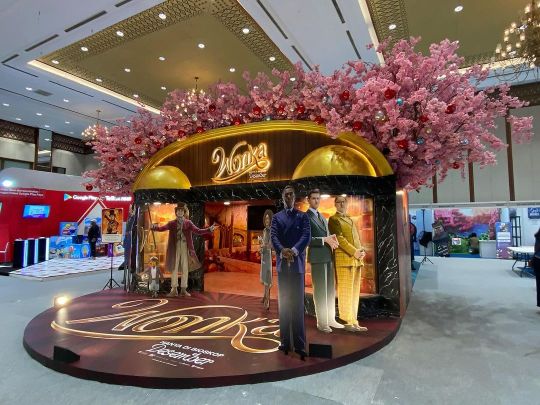

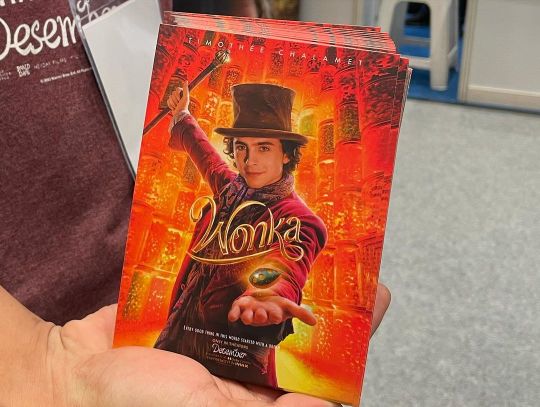
warnerbrosid- Visit the #WonkaMovie @indocomiccon booth at Jakarta Convention Center on 4-5 November 2023 and get a chance to get an exclusive Wonka postcard!
66 notes
·
View notes
Text
When people ask if I really like Weezer or if it's just a joke, I always say yes, I do love them and it's not a joke. And when they ask why, I always point to the Jakarta and Bali tour they did in 2022 as why
Whether or not I love Weezer, I've always had a deep respect for artists who learn the native language of the countries they're visiting to be more inclusive with the people who can't speak English
I liked Weezer a normal amount back then, but after finding out Rivers took the time to learn how to speak Indonesian when they toured Jakarta and Bali (and even covered a very popular Indonesian song in the language with near perfect pronounciation), Weezer became my new favourite band! I love their songs, they're great (especially the Red Album and EWBAITE) but also I love when artists take the extra effort to learn about the places they're about to visit to make their shows even more memorable to the people in there! And I think that's why Weezer is a lot more special to me than any other bands I'm currently into :)
#weezer#rivers cuomo#patrick wilson#brian bell#scott shriner#jakarta#bali#papas mistakeria special#And from what I gathered. Rivers would do this to every other non-English speaking countries they're touring in too!#I'm currently watching their Rio tour and he was speaking Portuguese (for a little bit)#Makes me love them even more!#Rivers speaking Indonesian is still stuck in my head to this day and I'll never forget it. And he did it so well too!#Rivers Cuomo you will always be my favourite
42 notes
·
View notes
Text
In Dili, Indonesia’s future means trying to forget about Timor-Leste’s past
Indonesian President-elect Prabowo Subianto, a former military officer, has been linked to alleged atrocities in Timor-Leste.
At Timor-Leste’s museum of memory, Hugo Fernandes supervises exhibits chronicling resistance and oppression during the Indonesian occupation – an era when Prabowo Subianto, now Indonesia’s president-elect, is alleged to have overseen atrocities.
Fernandes runs the Centro Nacional Chega! museum, a former prison in the capital Dili that dates to when Timor-Leste was a Portuguese colony. Faded photographs of Timorese resistance fighters and messages scrawled on the walls by prisoners who languished here during Indonesia’s brutal 24-year rule line its galleries.
Despite the shadows cast by history, the impending ascent to power of Prabowo, a former army special forces commander who was declared the winner of the Feb. 14 Indonesian general election, has been greeted with diplomatic decorum in this tiny young nation of 1.3 million people also known as East Timor.
“Prabowo’s specific actions remain unclear due to limited information,” Fernandes, the museum’s director, told BenarNews. “Accusations of human rights violations have persisted, but concrete evidence and verification are difficult to obtain.”
“Chega!,” which means “enough! in Portuguese, stands as a testament to Timor-Leste’s efforts to navigate the delicate path between preserving the memories of its dark past and promoting reconciliation with its giant neighbor next-door.
“There are differing voices within the nation,” Fernandes says. “Some activists advocate for answers regarding past atrocities, while others emphasize the importance of moving forward with Indonesia.”
In 1999, East Timor voted overwhelmingly to break away from Indonesian rule, through a United Nations-sponsored referendum. Before and after the vote, pro-Jakarta militias engaged in widespread violence and destruction. East Timor gained formal independence in 2002 after a period of U.N. administration.
The occupation, which followed after Indonesia invaded East Timor in December 1975, was marked by famine and conflict. The number of deaths attributed to that era ranges from from 90,000 to 200,000, the Commission for Reception, Truth and Reconciliation in East Timor reported.
This figure includes nearly 20,000 cases of violent deaths or disappearances. The commission’s findings indicate that Indonesian forces were responsible for about 70% of these violent incidents, set against the backdrop of East Timor’s population of around 900,000 in 1999.
And according to the Genocide Studies Program at Yale University, “up to a fifth of the East Timorese population perished during the Indonesia’s 24-year occupation … a similar proportion to the Cambodians who died under the Khmer Rouge regime of Pol Pot (1975-1979).”
Since 1999, the relationship between Timor-Leste and Indonesia has evolved, with Jakarta acknowledging its former province as a “close brother” and supporting Dili’s bid to join the Association of Southeast Asian Nations (ASEAN).
Timor-Leste President José Ramos-Horta welcomed Prabowo’s election win and expressed readiness to collaborate with Indonesia’s upcoming new leader.
“Very pleased, very pleased,” Ramos-Horta told BenarNews when asked about Prabowo’s victory.
As a young man, Ramos-Horta, now 74, was a founder and leader of Fretilin, the armed resistance movement that fought to liberate East Timor from the Portuguese first and then the Indonesians.
He said he had personally called Prabowo, now Indonesia’s defense minister, to congratulate him, and that the ex-general planned to visit Timor-Leste before his inauguration on Oct. 20.
Prime Minister Xanana Gusmão, a former guerilla leader who spent years in an Indonesian prison, was also happy with the news, Ramos-Horta said.
“President-elect Prabowo will contribute a lot, first to Indonesia, continuing stability and prosperity in Indonesia, and then in the region, as well as strengthen relations with Timor-Leste,” he said, adding Prabowo had “many friends” in his country, including his own brother, Arsenio.
When asked about Prabowo’s human rights record in Timor-Leste, Ramos-Horta said, “That is past. It’s already almost three decades, and we do not think of the past.”
Prabowo was a key figure in the military operations that crushed the East Timorese resistance.
The Timor-Leste National Alliance for an International Tribunal (ANTI), a coalition of civil society organizations, survivors, and families of victims, said reports had implicated Prabowo in a 1983 massacre in Kraras.
Some estimates said that 200 people were killed there, earning the area the nickname the “town of widows.”
In a statement released in November, the alliance said that as the head of the Indonesian army’s special forces command, Prabowo had directed actions resulting in severe human rights abuses and crimes, including the establishment of pro-Indonesian militias blamed for post-referendum violence in 1999.
In addition, Prabowo is linked to a 1991 massacre at the Santa Cruz cemetery in Dili, where some 250 peaceful demonstrators were killed, the alliance said.
In 1998, Prabowo was discharged from the military after a council of honor officers found him guilty of several violations, including involvement in the abduction and disappearance of pro-democracy activists during the 1998 student protests that led to the downfall of Indonesian dictator Suharto.
Prabowo, 72, has denied any wrongdoing and said he was only following orders from his superiors. He has never been tried in a civilian court for the alleged crimes.
Prabowo’s presidential campaign team said that witnesses, including religious figures in Timor-Leste, had denied his connection to the Krakas killings.
For many Timorese, the memories of Indonesian occupation are hard to erase.
Naldo Rei, 50, a former child guerrilla-fighter who was repeatedly imprisoned during that period, said he could not overlook Prabowo’s human rights record.
“While I don’t want to meddle in Indonesia’s internal matters, when it comes to human rights issues, Prabowo has a very distressing track record,” Rei told BenarNews, his soft-spoken and gentle demeanor belying his resistance years.
Rei spent his youth evading capture in the Los Palos jungle after the loss of six family members, including his father, to Indonesian military action.
In the early 1990s, he sought refuge first in Jakarta, then in Australia, before settling in an independent East Timor.
Rei, who is the author of “Resistance,” a memoir detailing his experiences, voices apprehension about the trajectory of Indonesian democracy.
“Prabowo’s victory, from my perspective, squanders the democracy that the people have fought for,” he said. “How many lives have been lost? He and other generals have blood on their hands.”
Januario Soares, a second-year medical student at the National University of Timor Lorosae, represents a growing sentiment focused on the future.
“Indonesia has chosen its leader. We need to focus on the future,” Soares said as he sat in the shade of a mahogany tree outside his campus in Dili.
He believes strengthening relations between the two countries is vital.
“The civil war left us divided, and in that division, we inadvertently opened our doors to Indonesia,” Soares said. “What followed was a period of violence against our people, a scar in our history.”
Yet, when it comes to Prabowo’s role in that history, Soares admitted he did not know much.
“The Indonesian people have made their choice. Perhaps Prabowo is the best among the contestants; that’s why they chose him,” he said.
Soares said he opted for a pragmatic approach toward the past, focusing on improving the quality of life and seeking benefits for the present and future.
“People change over time, and I believe Prabowo has changed too.”
Damien Kingsbury, a political expert specializing in Timor-Leste, said Timorese leaders were obligated to maintain a delicate diplomatic stance due to the small nation’s reliance on Indonesia for imports and its aspirations to join ASEAN, the Southeast Asian bloc. Indonesia is one of ASEAN’s founding members.
“Of course, Ramos-Horta must be diplomatic,” said Kingsbury, a professor at Deakin University in Australia, who has written extensively on Timor-Leste and Indonesia.
“He is president of a small country that has an unhappy history with Indonesia and does not want to create any possible problems,” he told BenarNews.
Kingsbury pointed out that while Ramos-Horta, a Nobel laureate and prominent diplomat, is well-versed in the language of diplomacy, there is a generational gap in awareness of the nation’s tumultuous past.
“Younger people may not be aware of events of 20, 30 and 40 years ago, but that does not mean they did not happen,” he said.
“It must leave a bitter taste in the mouths of many that Timor-Leste’s leaders need to be polite to Prabowo.”
22 notes
·
View notes
Text
“How did we lose to China in Indonesia!?”
This is the question being worriedly debated in government offices and executive suites throughout Japan. [...]
Japan’s project plan called for a five year construction period, including a full one year trial operation period. If construction were to start in 2018 the line would be ready to take passengers in 2023. Total cost would be some Rupiah 64 trillion (JPY 534.6 billion, or $4.5 billion).
The Japanese government operating through JICA (the Japanese International Cooperation Agency) would finance 75% of the cost with a 0.1% long term yen loan (terms and conditions in conformity with international convention for concessionary financing). The remaining 25% would have to be raised by the Indonesian government and private enterprises.
Importantly, Japan’s concessionary loan would--in accordance with international conventions for official government lending--require an Indonesian government guarantee.
Then, in October 2014, as the Japanese agencies and companies prepared for the project, something happened in Indonesia: the swearing in as president of Joko Widoko.
Campaigning for office Joko had called for greater infrastructure investment, and it was taken for granted that he was a supporter of the Java high speed rail project. However, Joko had campaigned as a “man of the people” whose priority would be improving welfare for Indonesia’s common and rural people over the more affluent people in the big cities.[...]
on March 26, Joko visited Beijing and met Chinese president Xi Jinping. Xi publicly announced support for the Indonesian high speed project and the two governments signed a memorandum specifying China’s interest in the Jakarta-Bandung line.
Well before the Joko-Xi meeting China had entered competition for the project. China’s proposal was for a total project cost of Rupiah 74 trillion (JPY 618.2 billion, $5.2 billion). The cost was higher than Japan’s, but China committed to financing the entire amount at an interest rate of 2%. Moreover, the project would be completed in three years--meaning taking passengers in 2018 [lol]. [...]
That China was awarded the project and Japan rejected seems to owe mainly to China’s willingness to accept the financial risk of the project (i.e., to forego an Indonesian government guarantee and also, thereby, possibly to finesse international ODA norms) and of Japan’s inability or unwillingness to do so.
The Toyo Keizei piece makes the point that such projects’ risks are not small. Taiwan is an example. Taiwan’s high-speed rail line enjoys relatively heavy business passenger traffic, which allows relatively expensive ticket prices. But the high prices seem to have discouraged non-business passengers, such that ridership numbers have fallen short of forecasts and revenues have proven insufficient to cover debt service requirements.
Compared with Taiwan, Indonesia is a very poor country. Given that business traffic will be relatively limited, ticket prices will have to be set low to be affordable for average citizens (and to avoid political backlash). Generating sufficient cash flow for debt service looks like a formidable challenge.
That China is willing to take the risk speaks volumes about how China views infrastructure aid in the Asian region. According to press reports China sweetened its offer in other ways as well, including committing to establish a joint venture with Indonesian firms to produce rolling stock for high-speed rail, electric rail, light rail systems, not only for Indonesia, but also for export to other Asian countries; to transfer related technology [!!]; and also to renovate and rebuild train stations.
2015
75 notes
·
View notes
Text
WISATA VIRAL BARU BUKA WAJIB KESINI ✌️ https://youtu.be/laK3n_9uFqM
youtube
#bxsea#bxchange#bexchange#bintaro#visit jakarta#youtube#wonderful indonesia#youtuber#donniykhristanto#donniy khristanto
1 note
·
View note
Photo

Clouded Leopard
Borneo (esp. Kalimantan).
Lots of people visit Kuala Lumpur, Jakarta, most of Java, and Bali. Not as many people head to Borneo, and of those who visit Borneo, most stay in Malaysia and very few venture into Kalimantan (the Indonesian part of Borneo). Rainforest, orangutans, leopards, and beaches, and it's way less crowded than Bali!
Photo: Thrill_Monster,Cloudtail
#thrill_monstercloudtail#photographer#photo#clouded leopard#leopard#cat#animal#mammal#wildlife#nature#borneo#kalimantan#travel#indonesia
79 notes
·
View notes
Note
i need more chan & ming besties moments 🥹 theyre so precious my bbys
chan x ming bestie moments



○ chan calling for her during concert
During their second concert at Jakarta for the Be the Sun Tour, their first stop without Ming, Dino made sure to include her in the show.
While giving his ending ment, he called out to her saying: ''Yerimie, we wrapped up the concerts very well! We'll safely come home!''
In spite of his members teasing saying that she won't hear him all the way from home, fans were still touched by the fact that even though she can't be there, Chan still makes sure she's mentioned.
○ ming's letter for chan's birthday
In his 2022 birthday live, Chan was visited by his fellow maknaes, Ming and Seungkwan. While Seungkwan gave him a Gucci bag, Ming gave him a handwritten letter.
''My best friend, Chan.
You've helped me a lot ever since we were both trainees. You're supporting this whole team, including me of course. You always do your best at everything and that encourages me to do better.
Thank you, friend! Always be healthy and let's be best friends forever <3''
On the bottom of the letter, Ming had drawn 14 hearts, representing each member.
Chan was visibly touched by the letter and expressed his gratitude towards her by pulling her in a hug. ''Don't make me cry on Vlive.'' He told her, jokingly wiping his tears away.
○ ming comforting him
Chan accidentally fell during one of their performances, due to the stage being very wet from the rain. Afterwards, he started crying because he was disappointed in himself for making a mistake. Ming was the first person to walk over to him and comfort him about the incident.
''It's okay, people fall down sometimes. You did a great job! You kept performing, I didn't even notice. You did great, you're a pro!'' Ming told him, putting her arm around his shoulder.
Chan slowly nodded along to her words. ''I was so shocked. I just wanted to continue the performance, the pain didn't really matter.'' He said, looking down at his feet.
''I'm proud of you.''

Taglist: @mystic-luv @cosmicwintr @mythicalamphitrite @billboard-singer @stopeatread @still-astray @sakuurra @multiplums @giverosespls @seongwhaffels @kimhyejin3108 @smoooore
#ming.svt#kpop oc#kpop au#kpop addition#14th member of seventeen#seventeen 14th member#seventeen female addition#seventeen female member#seventeen addition#seventeen au#seventeen x oc
106 notes
·
View notes
Text
SUGA | Agust D ‘D-DAY’ world tour report
A liberation journal of SUGA, Agust D, and Min Yoongi

SUGA became the first in BTS to go on a solo world tour with “SUGA | Agust D TOUR D-DAY” (We will refer to it as “D-DAY” from now on). Just as the title suggests, the tour showcases the Agust D Trilogy, consisting of Agust D (2016), D-2 (2020), and D-Day released in April this year. The concerts serve as a record of SUGA’s life over the past seven years or more. It is a page that transparently reveals his current self and also “a very honest performance” according to his words. With only the encore shows remaining, we have drawn up a “D-DAY” tour report including detailed behind-the-scenes and comments from SUGA about how he put his concert together.
SUGA kicked off his tour with a two-day concerts in New York on April 26 and 27. He successfully completed 11 shows in 5 cities across North America before returning to Asia to hold 12 more shows in Jakarta, Kanagawa, Bangkok, and Singapore. The tour concluded with two shows in Seoul June 24 and 25, successfully completing a total of 25 shows in 10 cities. Despite the tight schedule involving flying between multiple cities in a short span of time, SUGA added an additional show in both Bangkok and Singapore, managing to perform three shows per week in each of his tour stops in Asia. About the demanding schedule of touring ten different cities in a limited time, BIGHIT MUSIC’s head of Performance Directing Team 1 Lee Byung Eun, who directed the show’s performance and choreography, said that it reflected “almost 90% of [SUGA’S] will” to “continue on with the flow.” The tour holds significance as it marks SUGA’s return to arena-sized venues after a long period of performing in stadiums as a BTS member. Ha Jung Jae, Lead Professional at the HYBE 360 Concert Production 1 Studio, the group that directed the concert, said the main advantage of performing in an arena is being able to get closer to the audience, adding that, “indoor arenas with a ceiling allowed for a different type of performance (compared to previous BTS performances). “The arenas I’ve visited during the tour are places I’d been to at least once before, so it brings back a lot of memories.” says SUGA, adding, “I felt a strong sense of how well we’ve been doing for a long time”. The grand finale of this long journey will be the encore shows scheduled for August 4-6 at Seoul’s KSPO Dome.
“Through this performance, SUGA aims to eliminate all the different personas that exist in the world he created and be reborn. In that sense, “D-DAY” can be interpreted as the end of everything, or the beginning, like a birthday”. According to Ha Jung Jae, “D-DAY” is where “the end and the beginning coexist”. The second VCR “Kill Them All” scenes depict the intertwined relationships between SUGA, Agust D, and Min Yoongi, leading to their killing each other, symbolizing the end of the “Agust D Trilogy”. On the other hand, in the “Thanks to” letter section of the album D-DAY, SUGA writes, “The intense struggles I had in my head had no clear answers, and after a long time, I am reborn as the present me, on that D-DAY.” This is why Ha Jung Jae named the last VCR “Re Born” and strategically placed “D-Day” as the next song.
“I wanted to make a two-hour show that flowed organically from start to finish like a single, cohesive entity,” says SUGA. Ha Jung Jae says he put in efforts to select only the “absolutely necessary songs” and arrange them densely together in the setlist. BIGHIT MUSIC’s A&R 1 Team Leader Shin Daye, who planned the arrangement direction of the setlist, explains “although it was his first solo concert, he had enough repertoire to perform because he had already released three albums,” adding that the arrangement was directed to “make all songs flow organically” following the dramatic development. Ha Jung Jae said that the setlist composition from “Haegeum” to “The Last” represents a process of reaching from D-100(%) to D-0(DAY), explaining that “if the opening act is at 100%, as in it is perfectly produced, things get closer to “zero (O)” towards the end of the show.” According to Lee Byung Eun, this is why spectacular and eye-catching performances like “Daechwita” are placed at the beginning of the show, “to keep the tension as high as possible without giving the audience a break.” As the performance heats up with the second VCR “Kill Them All” and “after the stage created for the show and the many personas that SUGA had created in the past all burn down,” the flow transitions into the one that showcases his voice and determination. After performing “AMYGDALA”, the last song before the encore, SUGA collapses on stage and is carried away by his dancers. According to Ha Jung Jae, this signifies being reborn after erasing everything and dying, with the last VCR “Re Born” as the turning point. This is also the reason why the following encore performance, consisting of “D-Day”, “INTRO : Never Mind”, and “The Last”, primarily feature songs where the reborn SUGA “can share his personal stories of what’s on his mind with just a microphone”.
“Whether it’s SUGA, Agust D, or Min Yoongi, I think this performance embodies the essence of who I am as a person.” SUGA refers to the show as “the integration of all the data I’ve accumulated since I first stepped on the stage 15-16 years ago.” Considering that Agust D’s music is based on documentation of SUGA’s personal life, the show had to start out from the “person” SUGA is. “While preparing for the concert, I had many conversations with SUGA. It was a process of synchronizing myself to SUGA as a person. We talked about past memories, current thoughts, and the future.” says Ha Jung Jae. According to Lee Byung Eun,“It was impossible for the stage setting, production, and direction to move separately” and that is why the entire staff, including SUGA, “had to work together from the very beginning.” Before the first song “Haegeum” starts, SUGA is supported by the dancers as he ascends to the stage, and after “AMYGDALA”, he collapses and is carried offstage
According to Ha Jung Jae, “It all started with wanting to break the mold.” The tour itself was a process of constantly breaking the mold. Ha Jung Jae explained the intention behind the stage production, stating, “In BTS concerts, there is an unspoken rule that the stage should have a 17-meter-wide and 10-meter-long space to accommodate a minimum of seven members and 20 dancers. So this time, we thought we’d eliminate the performance area required for synchronized choreography.” Starting with “give it to me”, a portion of the stage panels becomes entangled with wires and begins to ascend to the ceiling, and as the show progresses, more panels disappear. By the end of the show, there is only enough space for SUGA to stand still. Lee Byung Eun says, “Limitations in using the stage space made the performance design not very easy, but I saw the space under the stage as available, considering that the audience had a 360-degree view.” That is why during “Interlude : Shadow”, the dancers use the floor beneath the stage to perform and create a mirage-like backdrop around SUGA during “People Pt.2 (feat. IU).” All of this is part of the journey toward liberation. When asked about his intention of designing the stage in a way that exposes its rustic steel structure that gives an impression of being built crudely without a graceful or flashy appearance, Ha Jung Jae said, “I wanted to build a conceptually driven stage, a stage born out of necessity. By the time the show reaches near the end, I wanted everything to be destroyed, burned, erased, and reduced to the primordial stage of “zero (O).” He also explained that the staff’s action of seemingly dismantling the stage as “The Last” performance comes to an end is intended to make the audience perceive the stage devices as “unnatural, created elements” and convey the desire to “eliminate everything unnatural.”
“A production trying to break with the past”, as Lee Byung Eun says, is a reflection of the intention of SUGA’s voluntary elimination and liberation of all the personas created by SUGA himself. This is why Ha Jung Jae compares the storytelling of the VCRs where SUGA’s many personas kill each other to a potter “repeating the process of making and breaking the pottery.” For example, the hand with chains in the visual playing behind SUGA during “give it to me” belongs to the 3D-modeled SUGA that appears on the screen during “Agust D,” implying that another SUGA is watching over the performing SUGA from outside the stage. This is to convey the message that everything offstage and onstage are done by SUGA himself. As for SUGA’s calm exit without any ending remarks or farewells immediately after performing “The Last”, Ha Jung Jae says, “the moment the song ends, we cut off everything even before SUGA exits the stage. So, there’s no background music, and lights are turned on immediately, cutting off any lingering emotions from the performance. And as SUGA turns around and walks away at that moment, those three seconds show the real SUGA. We wanted the audience, staff, and SUGA to just be themselves for that fleeting moment.” The “fleeting moment”, as described by Ha Jung Jae, seems to embody the liberation from the obligation to show and convey something in a performance. By the end of the performance, which shows SUGA’s present self through the beauty of empty space, SUGA finally reaches a moment of liberation where he breaks free from the names he has created in the past and is reborn. “Through this ‘D-DAY’ tour, I was able to release my pent-up passion and love for performing, which have been suppressed during the three years of the pandemic. And I feel that this tour itself is a ritual and act of forgiving all my past selves.”
“Bringing back the music from seven years ago and performing it on stage again was made possible thanks to the love and support from so many people who have been waiting for me. It’s all because of them.” As SUGA says, the songs in the setlist “Agust D”, “give it to me”, and “The Last” are from his 2016 mixtape Agust D and they were given a new life through the tour. “This tour has been a long time in the making, so all I could think about was how much I wanted to actually start the tour,” said SUGA, recalling his anticipation before his first show in New York. “It’s been so long since the last tour. One reason I started a music career was because I loved performing on stage. So, I wanted to put the stage before anything else,” says SUGA on why he chose a tour as the main promotion for his new album, D-DAY.
For “Life Goes On”, SUGA plays the “brown piano” with a calm expression and sings, “Fortunately, our relationship hasn't changed all along / Let's greet each other, not with a bye, but hello.” The “D-DAY” tour is the moment of SUGA’s reunion with ARMY that he longed for in BTS’ “Life Goes On” and Agust D’s “Life Goes On.” “People who love his music still came to see him even though it’d been a long time since SUGA had performed there last time. It was sort of proof that ARMY was alive and well,” said Ha Jung Jae, recalling the atmosphere of Jakarta. “Thinking how much fans must have wanted to see me perform, I wanted to show them everything they wanted to see,” said SUGA. He tirelessly moved around the stage, interacting with the ARMY, and played the guitar signed by BTS members while singing “Trivia 轉 : Seesaw.”. “I wanted to show how much I’ve transformed over the last three years”, says SUGA, by playing “the guitar I took up during the pandemic.”
SUGA talked about the joy of “having a strong connection with the audience during a performance.” “During this tour, I realized that the audience should always have fun and enjoy themselves. And for that, I have to do my best on stage.” Lee Byung Eun says that it was “a performance that both the audience and SUGA enjoyed,” noting that he could sense SUGA’s happiness, joy, and freedom even from below the stage. “Before the show, we had concerns about performing tracks from Agust D that contain personal stories and unfiltered expressions. But after seeing the audience from different countries and regions enjoying the performance in their own way, I realized that more than half of the show is created by the audience.” As Shin Daye says, during the show, SUGA sings the music of Agust D, an alter-ego he created to express his inner anxiety and anger, but with a smile and together with the audience. He passionately sings songs that contain his extremely personal stories throughout the two hours, yet there is no longer a sense of sadness or anger in his demeanor. Today’s SUGA taps lightly on his shoulder, sings, “my shoulder shattered thanks to the accident I met during my part-time job as a delivery guy” (“The Last”) and casually walks out of the stage as if nothing has happened. When asked in Suchwita about which part of his life “D-DAY” represents, SUGA replied, “I think it’s about now.” His subsequent comments about his current state of mind suggest that the “D-DAY” world tour is perhaps the clearest representation of SUGA’s “now.” “I feel more content and carefree than ever before. I’m just so happy to be able to relax and have fun during the show as if I’m going to hang out and have fun with the audience.”
To ARMY for coming to the concert
SUGA: In many ways, I’m glad I decided to do this tour. I remember every moment vividly. I always try to remember every single moment when I perform, but this time, in particular, no matter which city or country I visited, the audience was so welcoming and greeted me with loud cheers. I tried my best to match that energy. Whenever the instrumental for “Haegeum” comes on and the band starts to play, and the audience screams, I get so much energy to sing that I feel like I’m almost a new person. I think that’s why every moment stands out in memory. Thank you so much for your love and support for the tour. I felt and learned a lot through this tour. I can’t wait to go on a tour again with all seven of us. Maybe if I just close my eyes and open them, the seven of us will be on tour together. (laughs) Please wait a little bit, holding on to the good memories and positive feelings from this tour. I would appreciate it.
Article. Song Hooryeong
Design. paperpress.kr
Visual Director. Jeon Yurim
#ultkpopnetwork#mgroupsedit#idolsincedits#maleidolsedit#yoongi#suga#min yoongi#bangtan#bts#i. weverse magazine interview
50 notes
·
View notes
Text

Photo: CRRC
🇮🇩🇨🇳 INDONESIA LAUNCHES FIRST HIGH-SPEED RAIL IN SOUTHEAST ASIA FUNDED BY CHINA: PART OF BELT & ROAD INITIATIVE (BRI)
Indonesia unveiled the first high-speed railway in Southeast Asia Saturday, a joint-project between Indonesia and China funded at 75% by the Chinese State-owned China Development Bank and the remaining 25% was funded by Private Equity from Indonesian and Chinese shareholders. The Project is part of China's increasingly popular Belt & Road Initiative (BRI).
Though the initial project was projected to cost $6 Billion, some cost overruns mostly from land compensation costs raised the bill by another $1.2 Billion. Though by American and European standards, this would be a relatively small overrun.
The new high-speed railway connects Jakarta, a city of more than 10 million, with Bandung, an educational and technology of 2.5 million, with four stops: Halim, Karawang, Padalarang, Tegalluar.
The train four times daily, with a maximum capacity of 600 passengers and travels at speeds in excess of 350kmh (218mph), and covering a total of 142km (88mi).
The new train cuts the travel time between Jakarta's Halim station and Bandung's Padalarang from roughly 3 hours to just over 30 minutes, a truly stunning improvement for these rapidly growing and developing cities.
The high-speed train's cars are equipped with modern amenities including spacious seating, power outlets, and LCD screens while the ride is smooth, with few bumps.
Though a Western media blitz intended to deligitimize the project in recent weeks, actual Indonesian people's excitement about the project is evident.
“We feel very comfortable on the train. We can see how fast it is going,” said Muhammad Risman, a 48-year-old private employee from Jakarta who was taking the test ride with his wife.
"The seats are nice and spacious. The screens are also easy to see and show us what the route looks like.”
While Indonesian President Joko “Jokowi” Widodo, who also rode on the train for the first time last week, expressed his admiration for the project.
“I had visited the high-speed train project site four times before, but this was the first time I actually rode on it. It was very comfortable, and I didn’t feel the speed of 350 km [per hour] at all, whether I was sitting or walking around,” Jokowi said.
“This is what civilization looks like."
#source
#source2
#source3
#indonesia#china#high speed rail#BRI#belt and road initiative#news#politics#infrastructure#china news#asia news#indonesia news#world news#global news#international affairs#international news#international politics#geopolitics#geopolitics news#geopolitical events#geopolitical news#socialism#communism#marxism leninism#socialist politics#socialist news#socialist#marxism#wokersolidarity#worker solidarity#WorkerSolidarityNews
26 notes
·
View notes